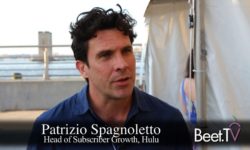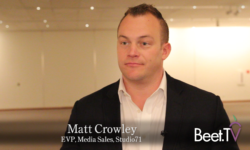At this week’s NewFronts event in New York, where publishers tempted ad buyers to spend ahead on their upcoming content line-up, one of the world’s leading news publishers sought to convince brands that news, in 2018, is not such a bad channel after all.
There is a lot of bad news to go around, with troubled political climates and challenging rivalries making headlines around the world – and that has got many advertisers concluding “no news is good news”.
Some media agency executives told Digiday they had blocked hundreds of news sites. Over the last year, several news or so-called news sites have found their way on to the blacklists which some ad buyers and platforms use.
It was a sentiment Richard Pattinson of BBC News’ sponsored brand content-making studio sought to soothe at the NewFronts.
“We are protecting them from the harder edges of news, and I think that was one of the messages that was on display here today,” he told Beet.TV at the event.
“We are integrating new technologies – actually, I think we have just done it in the last month – that protects brands from being against the hardest of hard news stories
“We are very conscious that when brands are alongside news … then they are not adjacent to any of the challenging stories that would cause discomfort.”
To license fee-payers in the UK, the idea that the BBC could run ads at all – let alone sponsored content – is anathema to the service.
But that’s the UK. Beyond the border, BBC Worldwide, the corporation’s commercial arm, is charged with raising revenue from advertising. In 2015, branded content, through its new BBC StoryWorks content studio, became the latest manifestation of that. Now BBC Worldwide is helping brands write for and publish to its outlets including BBC.com and its BBC World News TV channel.
Pattinson, who is SVP of the StoryWorks unit is a former editor for a series of BBC News shows and brands, now running the brand content studio.
He adds: “The way we create our stories with brands is done in such a way that it has an editorial sensibility similar to the editorial content it sits alongside, and we find that, that’s really effective in delivering the most impact because it’s the kind of thing our audience are expecting to see. It doesn’t surprise them as something that feels a bit alien alongside the editorial content.”
The unit is using “facial coding” technology and will soon be adding eye-tracking studies to better understand consumer responses to its campaigns.
This video is part of Beet.TV’s coverage of the Digital Content NewFronts 2018. The series a co-presentation of Beet.TV and the IAB. Please see additional videos from the series on this page.














































